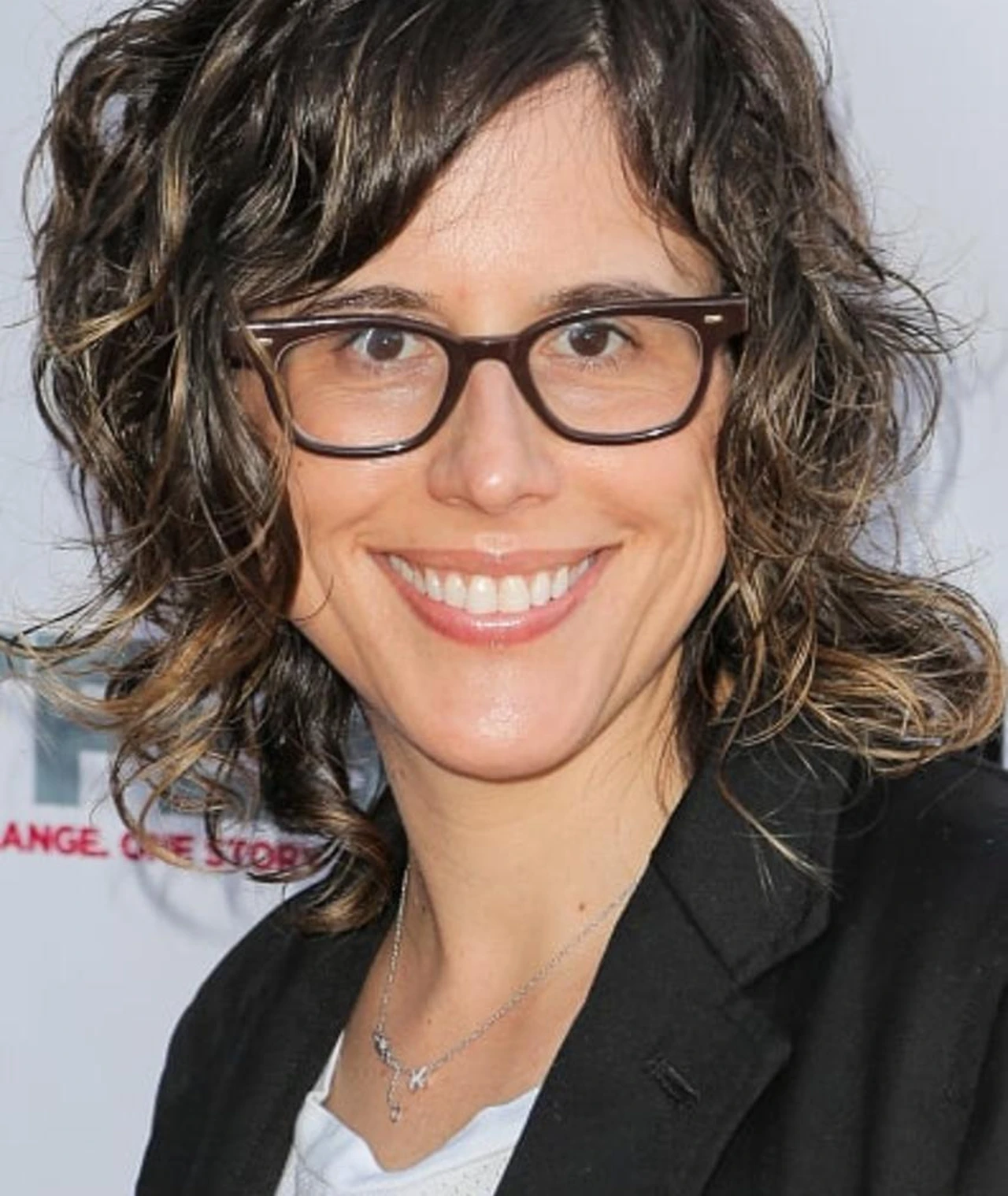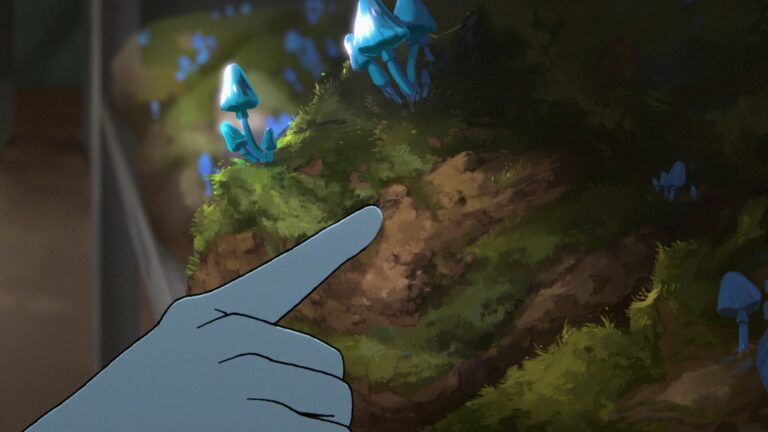If you say “Blowfish” three times fast, will a plush toy and a pile of emotional baggage appear? After Episode 7 exploded onto our screens with neon foam, prison jokes, and a level of heart that stung more than the prison soup, fans had to know: who pulled this off? The answer is Karey Dornetto – the woman who can wring laughs from trauma and still leave us misty-eyed by the end credits.

From Balance Sheets to Bunk Beds: Karey’s Unlikely Origin Story
Before Karey Dornetto was scoring Emmy noms and goosing TV with her sly humor, she was, believe it or not, crunching numbers. Charleston, South Carolina, was her launchpad. She finished a finance degree at the University of South Carolina, and unlike most scribes in Hollywood, Karey’s first “clients” were sitting across a bank desk at Bank of America.
Yet, suits and spreadsheets could only hold her for so long. New York beckoned next, with its dark bars, musty stages, and the wild electricity of stand-up comedy. Karey landed herself on stage at the Upright Citizens Brigade Theatre, sharpening a wit that’s later become her signature.
From there? It’s almost mythic. LA called, “South Park” answered. Karey squeezed into the writers’ room of that still-iconic madhouse in the early 2000s, rough-drafting for “Free Hat” and learning how to volley between savage cartoon stings and genuine absurdity.
Her résumé is now an object lesson in viral, off-kilter TV. She’s jammed jokes for “Community” (“Interpretive Dance”—that episode with Troy’s secret groove), gone full meta on “Arrested Development,” and helped turn “Portlandia”’s fake city into must-see TV, snatching those sweet Emmy nominations in 2013 and 2014. Need more street cred? Toss in credits for “Kroll Show,” “New Girl,” “AJ and the Queen,” and even “Krapopolis,” always jumping between sketches, sitcoms, and surrealist playgrounds. She’s not just prolific – she’s flexible, moving between darkness and giggles like it’s second nature.
The Heart in the Punchline: What Sets Karey Apart
Here’s the thing – Karey’s not all punchlines and pratfalls. There’s a grittier gear beneath the gags. She once told crowds at PaleyFest, “I grew up around addicts and bank tellers. Comedy was how we neutralized dread.” That’s not a throwaway line – it’s her playbook. If you can get the laugh, she figures, maybe you can sneak in a deeper truth.
It’s obvious in every show she’s touched. “Community” plays with pain. “Portlandia” mocks modern anxieties – and even makes them a little loveable. When she co-wrote “Addicted to Fresno,” a SXSW-featured dark comedy with Jamie Babbit (now her wife), critics called out how seamlessly she wove biting humor with stories of broken people looking for repair. Talk about threading the needle.
Inside the Writers’ Room: Landing on “Common Side Effects”
How did Karey end up behind one of the season’s grimiest, funniest episodes? StreamWave green-lit “Common Side Effects” straight-to-series, hoping for something both buzzy and boundary-smashing. As Season One’s storyline rolled off the rails (pharmaceutical cover-ups, anyone?), showrunner Maya Alvarez realized the show needed a seasoned hand. Dornetto was their “joke doctor who likes pain with her punchlines,” as Alvarez told Vulture last year.
Though she’s floated around the writer’s room for several episodes, “Blowfish”—Episode 7 – is Dornetto front and center. This is her mad experiment.
Breaking Down ‘Blowfish’: More Than Just Prison Puke
Episode 7 isn’t a walk in the park – unless your park is surrounded by armed guards and fluorescent lights. Marshall, after the big pharma leak debacle, heads to a federal transfer lock-up. The first two minutes? There’s an opening cavity-search gag that somehow elicits an involuntary snort. But then – whiplash. Karey plunges us into eleven minutes of claustrophobia, dread, and literal cold sweat. Yet, before the darkness chokes everything, there’s a plush blowfish, lobbed onto the top bunk as comic relief. It’s absurd. It’s weirdly sweet. And, against the odds, it works.
How? Let’s break it down:
– Character Comedy Over Cheap Jokes:
Marshall’s dry-as-dust wit (those tired eyes, that muttered “yep” when things get really bad) meets his motormouth cellmate Chewie, played by stand-up favorite Fahim Anwar. Chewie’s optimism is so relentless it’s both gag-worthy and, eventually, inspiring. Karey lets these two ricochet off each other. The result is a pressure-cooker that’s tense, but never mean, and just the right kind of awkward.
– Visual Gags as Safety Valves:
There’s that plush blowfish. It’s goofy, yet clutch. Audiences on Twitter loved it, turning it into the night’s “emotional support fish” meme. Or watch for the orange Jell-O scene – where Marshall uses it to distract from a guard’s threats. These aren’t gags for gag’s sake. Instead, each one ratchets down the tension just enough that viewers don’t tap out.
– Absurd Collides With Serious:
Suddenly, the prison doctor (a cameo from Dana Delany, playing disturbingly against type) tries out another not-quite-legal anti-nausea drug on inmates. The fallout? A room full of grown adults projectile vomiting neon foam. It’s grotesque. It’s also, thanks to Dornetto’s timing, funny in a way that almost makes you feel guilty for laughing.
– Rhythmic Editing and Delivery:
Director Addison Blum makes sure no joke lingers too long. Many laughs don’t last more than seven seconds before a sharp swerve into fresh dread. Dornetto’s writing and Blum’s editing become fused – a dark dance where humor lets in just enough light to see there’s real pain lurking underneath.
Getting Personal: Karey’s Big Trick With Tone
If you dig deeper, Karey doesn’t just want snickers – she wants access. As she put it years ago for ShockYa: “If you can make people laugh first, they’ll trust you when you drag them into the dark stuff.” “Blowfish” is a perfect example. By the time Marshall hits his emotional bottom, we’ve already cracked up a half-dozen times. So, when the heartache lands, it feels shocking – but earned.
Dornetto’s approach is never cynical. Instead, she looks at chaos, gets it to grin, and then shows you why the pain matters. That’s rare.
Fan Frenzy and Critical Love: The Reception
On airdate, #Blowfish trended across Twitter/X. There were 18,000-plus posts in 24 hours, many meme-ing the blowfish plush or riffing on Chewie’s caffeinated optimism. Rotten Tomatoes put “Blowfish” at 94%, high even by “Common Side Effects” standards. IGN’s midnight recap called it “knife-sharp gallows humor.”
But it wasn’t just critics. Fans called out how the show helped them “laugh off the ugly stuff.” Suddenly, Marshall’s trauma felt less like alienation and more like shared experience. That’s hard to bottle.
Dornetto’s Signature and What Lies Ahead
It’s no fluke. Karey’s balance of the bleak and the buoyant doesn’t just keep “Common Side Effects” interesting – it’s why people keep watching. She’s not finished, either. In April, Variety broke news that Dornetto’s got a still-untitled dark comedy at Peacock, which promises “scandal, suffering, and the best one-liners this side of cable.” And Season 2 of “Common Side Effects” is already teasing even more of Marshall’s journey, with Dornetto rumored to be taking the reins on at least two more episodes.
Why We’ll Keep Watching
Not every writer can juggle heartbreak and humor. Dornetto’s secret? She never lets either take all the space. Laugh for a while. Cry for a bit. Maybe keep a plush blowfish nearby, just in case.
That’s life. Or at least, it’s Karey Dornetto’s take on it – and honestly, who’d want it any other way?




